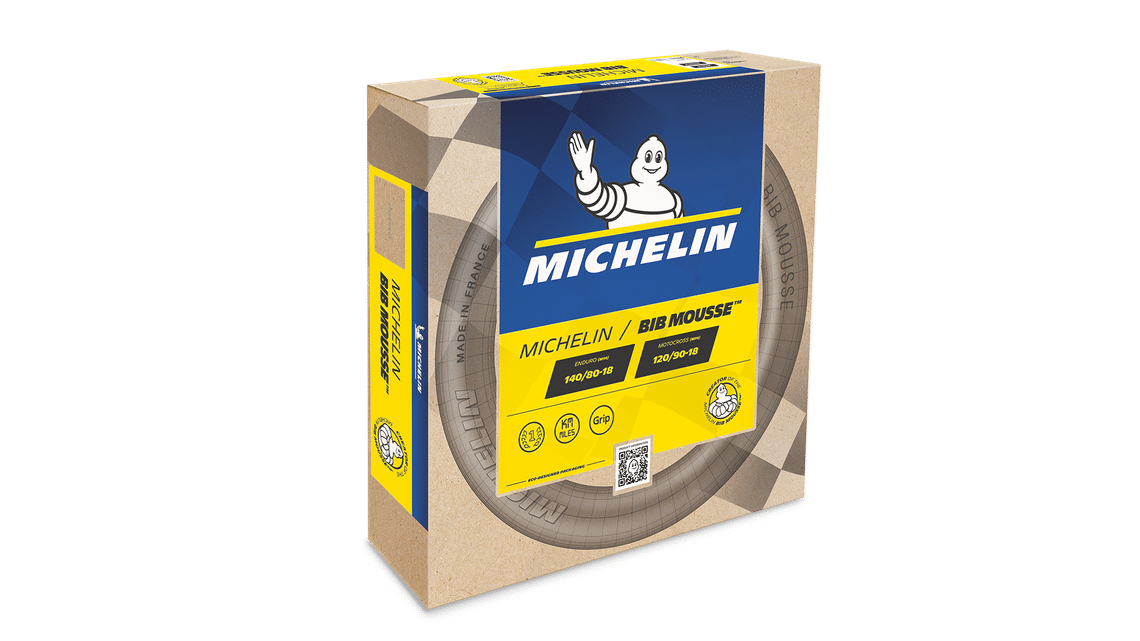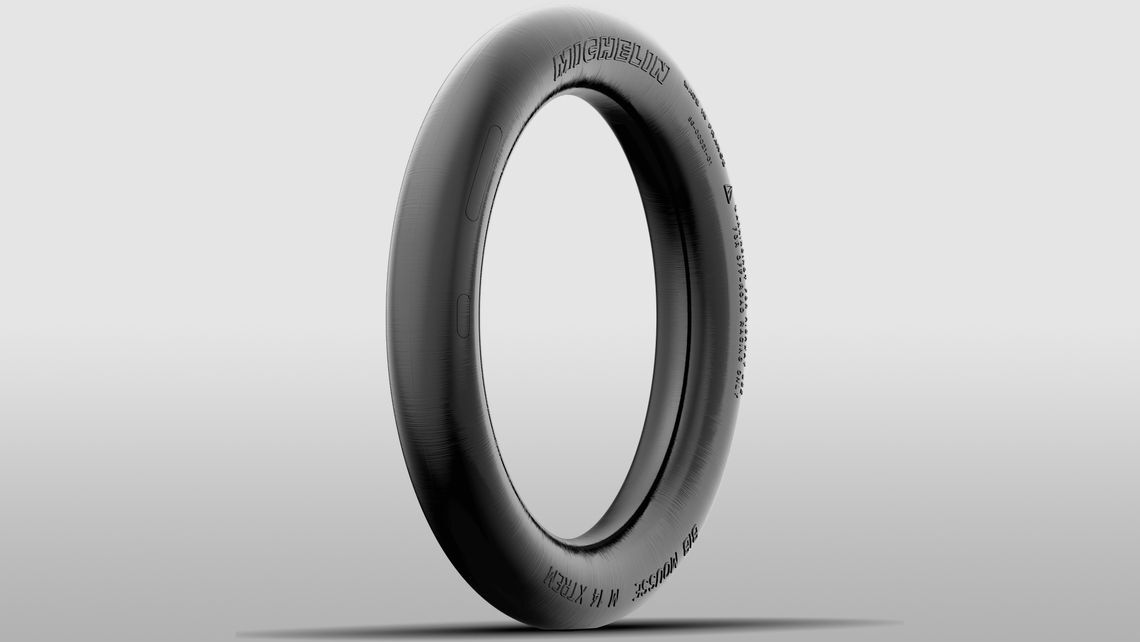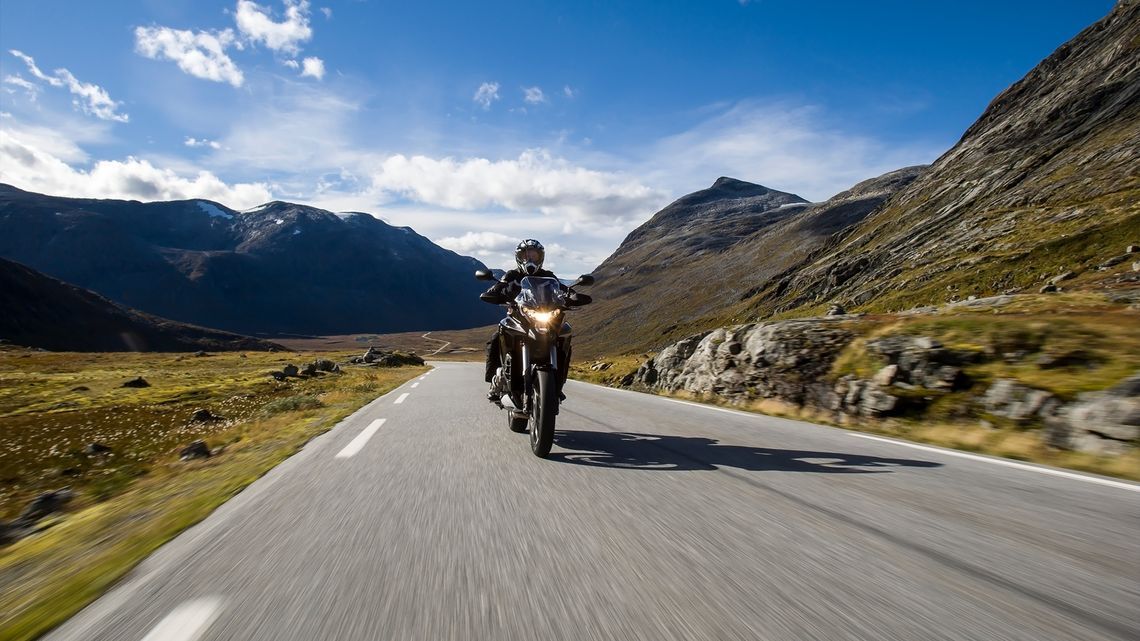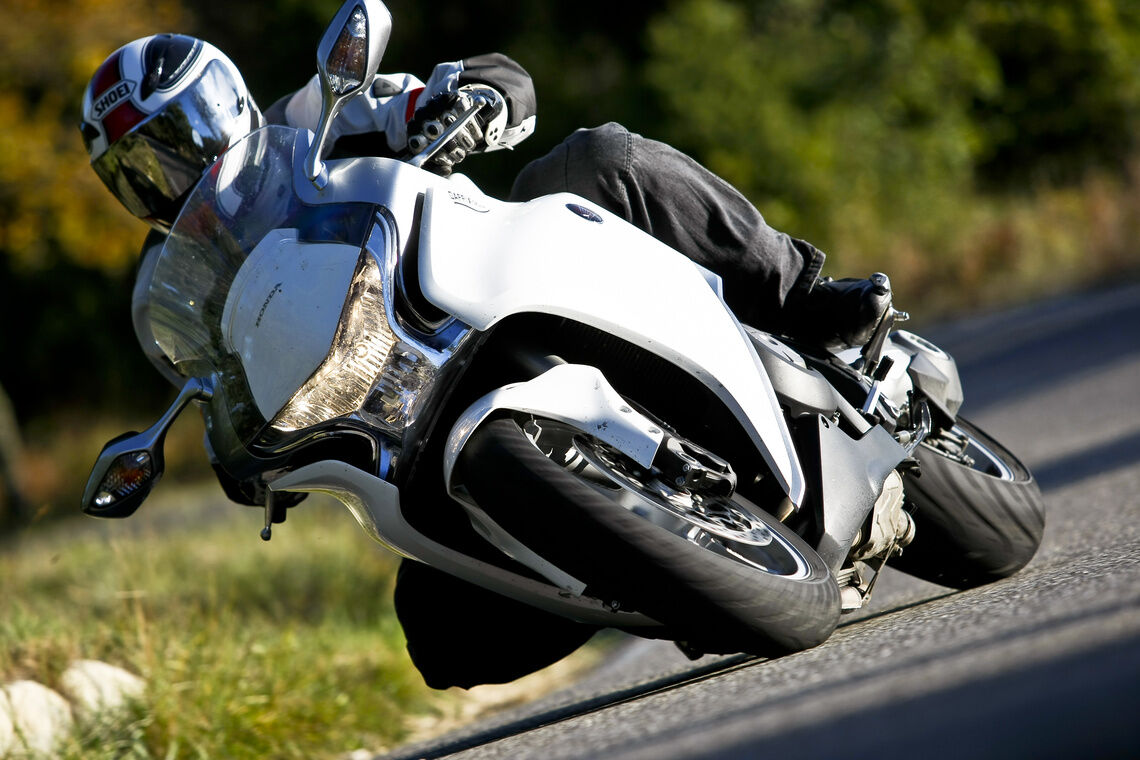General motorcycle tyre pressure recommendations
It is essential to check your motorcycle tyre pressure every two weeks and before any long journey when the tyres are cold (i.e. a tyre that has not run for at least two hours or has run for less than 3 km at a reduced speed). Ensure that you make adjustments if you take the pressure after riding, i.e. with "hot" tyres. In this instance, refer to the manufacturer's recommendations.
Never deflate a hot tyre
Don't forget to replace the valve caps after your checks are complete
Tyres filled with nitrogen must still be checked regularly and adjusted with nitrogen only
Stick to the motorcycle tyre pressures recommended by the manufacturer
These recommendations are applicable for tyres used on the road.
There are additional recommendations for off road and track pressure.
Off road motorcycle tyre pressure

Off road motorcycle tyre pressure recommendations are only suitable for limited durations, speeds and loads on sealed high speed surfaces such as roads. Increased tyre pressures are advised for unavoidable road use, prolonged road use should be avoided altogether.
Recommended pressures
These are the motorcycle tyre pressures recommended by Michelin depending on the terrain, the weather conditions, the power of the bike and the type of control:
OFF ROAD PRESSURES | Recommended pressures | Minimum Recommended pressures | ||
|---|---|---|---|---|
FRONT | REAR | FRONT | REAR | |
MICHELIN StarCross 6 | 0.9 bar | 0.9 bar | 0.8 bar | 0.8 bar |
MICHELIN StarCross 5 | 1.2 bar | 1.2 bar | 1.0 bar | 1.0 bar |
MICHELIN Enduro Xtrem (rear) | 0.8 bar | 0.6 bar | ||
MICHELIN Enduro Medium | 1.0 bar | 1.0 bar | 0.8 bar | 0.8 bar |
MICHELIN Enduro Hard (front) | 1.0 bar | 0.8 bar | ||
MICHELIN Tracker | 1.2 bar | 1.2 bar | ||
MICHELIN Desert Race | 1.2 bars | 1.5 bar | 1.0 bar | 1.0 bar |
MICHELIN Desert Race BAJA (rear) | 1.2 bar | 1.0 bar | ||
MICHELIN Trial Competition | 0.39 bar | 0.35 bar | ||
MICHELIN Trial Competition X11 | 0.35 | 0.3 | ||
MICHELIN Trial Light | 0.39 bar | 0,39 bar | ||
MICHELIN Bib Mousseᵀᴹ: Michelin's off-road solution to a puncture!


If you are tired of punctures on your off-road rides or if you are looking for a solution to avoid this risk, you can equip your tyres with our MICHELIN Bib MousseTM.
Trial tip
The design of Trial tyres makes them tricky to mount. You run the risk of breaking bead wires if you press too hard. Carefully adhere to the fitting instructions for insertion of the rim hooks (lubricate, firmly hold the bead on the opposite side in the rim hollow - do not exert excessive force on the bead). To inflate, position a rubber ring between the tyre bead and rim or use a firmly tightened strap on the tyre crown to enable initial pressurizing pressurising.
Tyre wear
The tread provides most of the tyre's grip on the ground. With wear, the tyre's grip decreases. So remember to regularly check your tyres for signs of wear: visually check the depth of the tread and the uniformity of the wear. Tyre pressure also has a direct impact on wear.
Two possible classifications for the same tyre dimension
Careful! There are two classifications for the same tyre dimension.
Old classification: MICHELIN Enduro, Desert Race > size designation based on the width of the tyre measured at the tread level
New classification: MICHELIN StarCross, Tracker, AC10, Trial > size designation based on the width of the tyre measured at sidewall level
For example : a 140/80-18 Enduro tyre corresponds to a 120/90-18 Motocross tyre (see our table below).
ENDURO | MOTOCROSS |
|---|---|
90/90-21 | 80/100-21 |
120/80-19 | 100/90-19 |
130/70-19 | 110/90-19 |
120/90-18 | 100/100-18 |
130/80-18 | 110/100-18 |
140/80-18 | 120/90-18 |
The width of Motocross tyres is measured at the base of the studs, whereas the width of Enduro tyres is measured at the widest point, i.e. at the top of the studs
On track motorcycle tyre pressure

Correct pressure enables optimum performance levels to be achieved.
The pressure should be set at ambient temperature and depends on the tyres you have chosen to mount on your motorcycle:
MINIMUM COLD TYRE PRESSURE WITH TYRE AND WHEEL RIM AT AMBIENT TEMPERATURE (1) | TARGET PRESSURE WHEN HOT | ||||
|---|---|---|---|---|---|
FRONT | REAR | FRONT | REAR | ||
MICHELIN Power Performance | 2.1 bar | 1.3 bar | 2.3 to 2.5 bar | 1.5 to 1.7 bar | |
MICHELIN Power Slick 2 | 2.1 bar | 1.5 bar | 2.4 bar | 1.7 bar | |
MICHELIN Power Cup 2 (3) | 2.1 bar | 1.5 bar | 2.4 bar | 1.7 bar | |
MICHELIN Power Cup Evo (3) | 2.1 bar | 1.5 bar | 2.4 bar | 1.7 bar | |
MICHELIN Power Rain - Drying | 2.3 bar | 1.8 bar | |||
MICHELIN Power Rain - Wet | 2.4 bar | 2.2 bar | |||
MICHELIN Power Rain - Soaking wet | 2.4 bar | 2.4 bar | |||
MICHELIN Power SuperMoto | 1.7 bar to 1.8 bar | 1.5 bar to 1.6 bar | 1.9 bar to 2.0 bar | 1.7 bar to 1.8 bar | |
MICHELIN Power SuperMoto Rain - Drying | 2.3 bar | 1.8 bar | |||
MICHELIN Power SuperMoto Rain - Wet | 2.4 bar | 2.2 bar | |||
MICHELIN Power SuperMoto Rain - Soaking wet | 2.4 bar | 2.4 bar | |||
MICHELIN Power GP (3) | 2.1 bar | 1.9 bar | |||
1) Pressure taken with tyre and rim at ambient temperature, just before the first ride or just before installing the tyre warmers.
(2) Michelin recommends setting the tyre warmer temperature to 194°F
(3) After riding on the track and before street riding, you will need to adjust the cold tyre pressure to the manufacturers’ recommended setting
For riders competing with the MICHELIN Power Performance range, Michelin’s technical teams can provide on-the-spot advice on adjusting motorcycle tyre pressure depending on:
Air/track temperature
Track abrasiveness
The rider's level of skill
Use of tyre warmers:
MICHELIN Power Slick 2, MICHELIN Power Cup 2, MICHELIN Power Cup EVO and MICHELIN Power GP are designed to have a short warm-up time: use of tire warmers is not mandatory.
When using tire warmers, the pressure set at ambient temperature before the first ride should be the same as without tire warmers.
Using tire warmers makes it possible to reach operating pressure more rapidly. In no cases does the use of tire warmers make it possible to start with a lower pressure. The main aim of using tire warmers is to reach the optimum operating pressure faster to save on warm-up time at the beginning of the ride.
Tire warmers should be used with a temperature of 90°C for at least 1 hour before the first ride. For Supermoto Slick tyres, don’t exceed 70-80°C.
In cold conditions, tire warmers should not be set to too high temperature. The colder it is, the lower the temperature of the tire warmer should be in order to avoid the situation of tires cooling down while riding. Tires that cool down while riding can skew the rider’s perception of actual performance levels.
Use of tire warmers with the MICHELIN Power Rain is not mandatory. If it is used, they should be adjusted to temperature of 40°C.
These pressure recommendations are given for track use. For road use, the manufacturer’s tire pressure recommendation applies. With track tires approved for the road, or road tires for occasional track use, it is essential to ensure that tire pressure is returned to the correct level for road use following use on the track.


